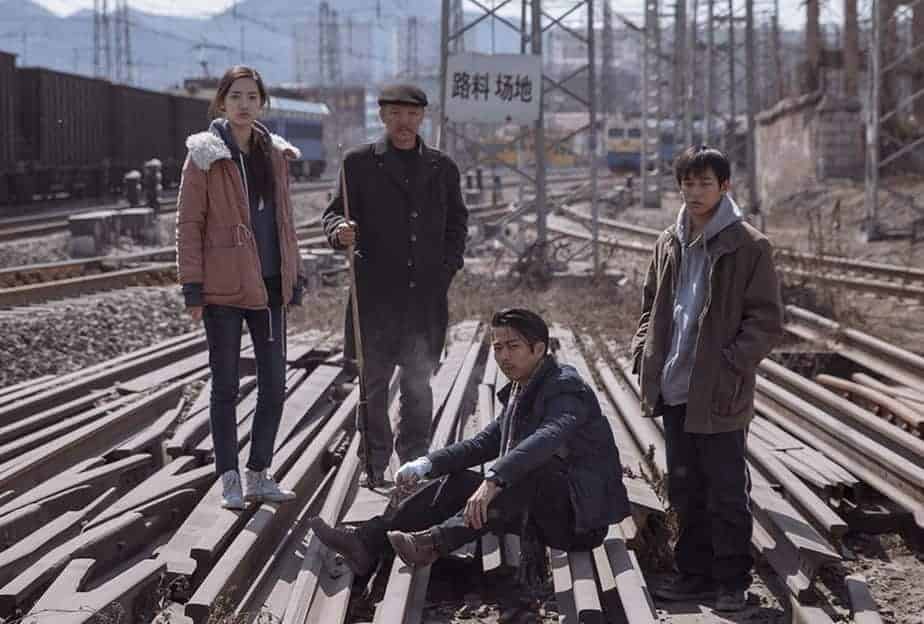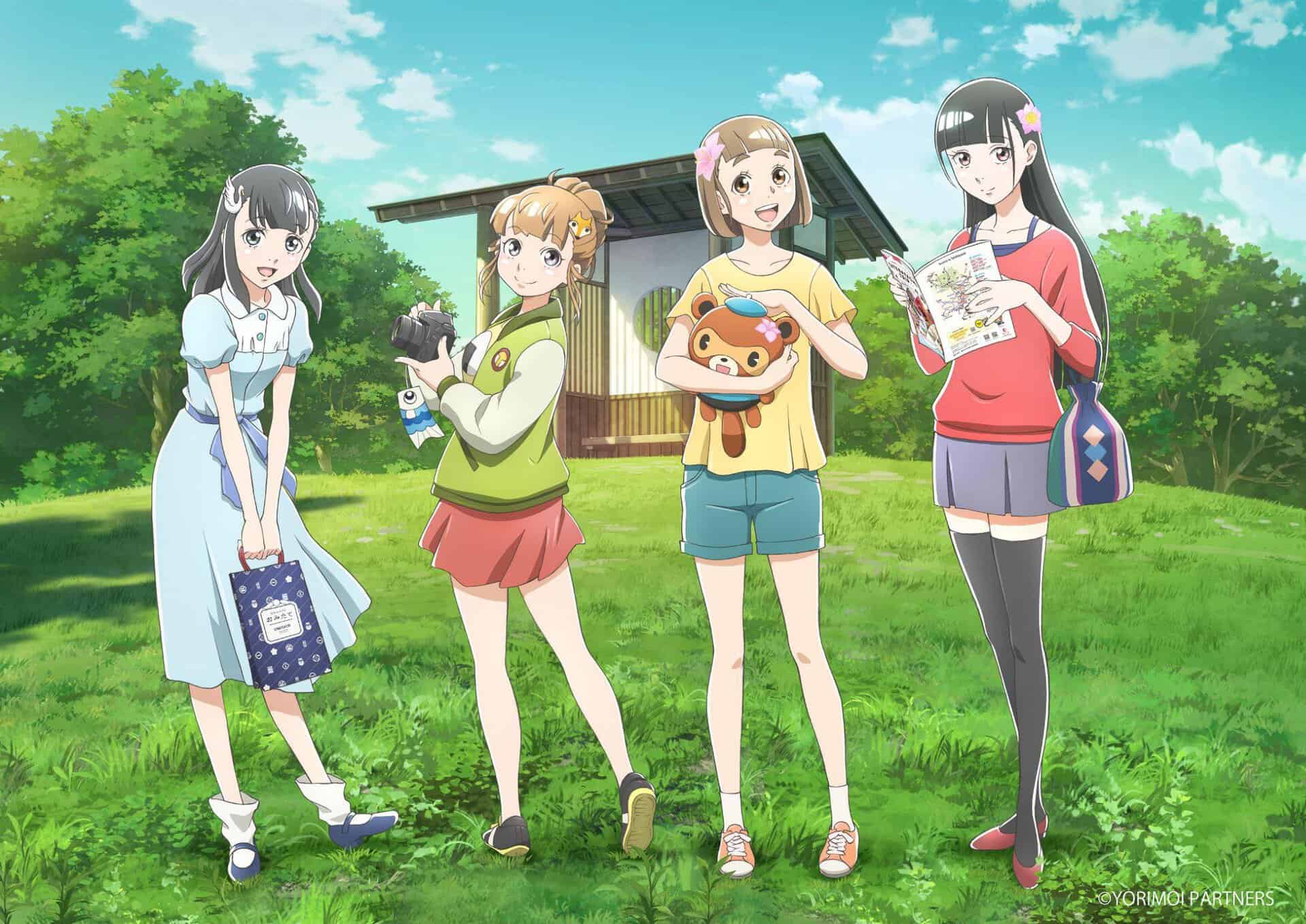by Maja Jankowska
Hu Bo, a Chinese filmmaker and writer, was the creator of one of the most important debuts of the twenty-first century, “An Elephant Sitting Still”. The tragedy is that the artist could not see the premiere of his film as he committed suicide at the age of twenty-nine. The creator who had once a unique sensitivity and talent has left the world, depriving his audience a possibility to connect. It is mainly through the prism of death the film is often perceived, although Hu Bo's debut has many advantages that are difficult to pass by indifferently. In particular, the work of the Chinese filmmaker is distinguished by his maturity and incredible insight in the analysis of social problems, such as violence or exclusion.
This article is part of the Asian Cinema Education Film Criticism Course 2021

“An Elephant Sitting Still” consists of four intertwined and complementary threads, unfolding as a nearly four-hour epic that tells the story of the inhabitants of a polluted industrial coal town in the Hebei province of China. Hu Bo uses four figures: a rebellious young man, a naive teenager, a gangster tired of life and a kind-hearted old man. In this quartet, it is the young who play the leading role, although, regardless of the generation they belong to, each of the protagonists lacks any prospect for a better tomorrow. All heroes cannot stand living in the reality that surrounds them. The grief they experience makes them strive to meet the elephant in Manzhouli.
Wei Bu, one of the main characters, has a Hamletic nature. Being full of doubts and dilemmas, this young man has a tendency to constantly self-analyze. Wei Bu's actions are the driving force behind the actions of the other heroes, or at least come across with their fates. The boy not only has to deal with verbal abuse from his unemployed father but is also being harassed at school, where classmates humiliate him and his family. Physical violence also occurs in this institution which should be safe for teenagers. The unfortunate chain of events will turn him into an outlaw. His school friend – Huang Ling, also faces the adversity of everyday life, as she is focused on taking care of her mother who treats her like a servant, as well as an affair with an older man. Although the romance seems to be a safe haven at first, it will quickly collapse like a house built on sand.
Yu Cheng is a local gangster. We meet him at the very beginning of the film, when, during a meeting with his mistress, he unexpectedly witnesses a suicide scene. It quickly turns out that the man who decided to jump through the window in front of him is much closer to him than it seemed at first glance. Yu Cheng is struggling with responsibility, blaming all his failures on those closest to him. Another person who experienced hardships in his life is Mr Wang, who, although has his own apartment, is not welcomed by his family members. His most faithful companion is a dog with whom he gets along better than with his own son. Mr Wang seems to be tired of life, but for the younger protagonists, he will be a voice of reason in difficult times.

Then there's the elephant that sits still, supposedly living in the city of Manzhouli in the north of China. The characters occasionally mention that the animal doesn't seem to care about the surroundings or the visitors. The phenomenon of this animal makes the protagonists want to see it. In fact, it seems that this is just an excuse to escape from the gray reality. At the same time, it is hard to resist the impression that the characters themselves are like a seated elephant who does not care about what is happening around him. For a large part of the plot, the heroes do not take actions that could allow them to break out of their lethargy. Moreover, sometimes their misfortune strengthens their beliefs, making them unable to admit their mistakes. The desire to see the elephant becomes a distant goal for the protagonists and forces them to be active and break out of stagnation.
“An Elephant Sitting Still” is a narrative of hopelessness, violence and selfishness. What's interesting is that the action of the film could be taking place anywhere else on the planet. Hu Bo creates an image of China in a gray space filled with dirt – the blue-collar housing development in a third-tier Chinese town where an atmosphere of ruin and futility lingers. Even homes seem to have surrendered to time or to be drowning in rubbish. In one of the scenes in a decaying brick structure, the main character stumbles upon an unnoticed corpse of a relative who has been dead for days. We won't find any colors in the frames, it is even impossible to have a glimpse of the rays of the sun. Everything is surrounded by smog fog and industrial ashes. The way the space is pictured may suggest that all the negative emotions stem from the environment the characters are brought up into. Since reality does not give any hope for optimism, and the younger generation repeats the mistakes of the older ones, it is a vicious circle that cannot be escaped.
At the same time, however, it is difficult to fully sympathize with the heroes when we witness their thoughts. Despite the fact that the protagonists experience violence, they are often the source of it themselves similarly, to their own torturers. Although the reality in the Chinese director's film seems to be portrayed as black and white, the personalities of his characters are extremely complex and elaborate. The personalities of the heroes are an interesting counterpoint to the homogeneous reality, showing that it is impossible to judge everything schematically.
The technical aspects also influence the way we perceive the film. First of all, it is impossible not to pay attention to the overwhelming number of close-up or medium shots. Only the four protagonists remain visible in the frame, even when their backs are turned away or when they are silent. It is as if the supporting characters do not matter or have no influence on the plot of the film. Long horizontal shots by Chao Fan make the image smooth, allowing the viewer to immerse in this journey. The word “journey” is justified because not only our heroes are constantly in motion, but we also observe many shots from behind the backs of the characters, which makes us the silent specactors. Hu Bo's imperceptible, almost documentary editing strengthens the vividness of cinematic reality, enhancing the tangibility of the characters and their experiences.
The action often takes place outside the camera lens, forcing the viewer to discover some of the events himself. This strengthens the feeling of helplessness that accompanies the quartet of characters. Interestingly, the way of framing changes with the appearance of a slight optimism in the lives of the characters. Few far-away plans that appear in “An Elephant Sitting Still” can be interpreted as an attempt of breaking out of the claustrophobic dead space.
The depressive aura of Hu Bo's film seems to leave little room for optimism. The fate of the heroes is guided by forces from above, reminding them of fatalism and condemning them to failure. However, the stubbornness of the protagonists in pursuing their goals and, above all, seeing a sitting elephant can bring the viewer a form of catharsis. The ending comes unexpectedly, before the heroes reach their destination, as if the creator wanted to say: that's all, just me, my anxiety, and the night. There will be no other end of the world.















